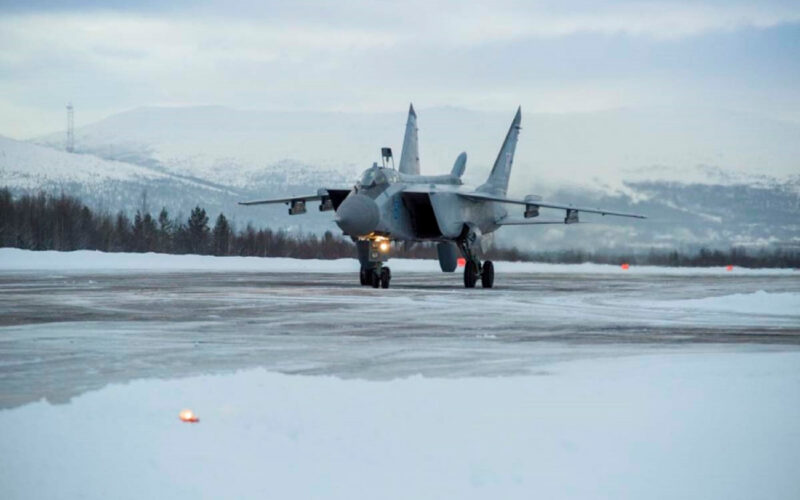A squadron of Mikoyan MiG-31BM Foxhound air superiority fighters was deployed at Rogachevo Air Base in the Novaya Zemlya archipelago, one of the northernmost regions of Russia. From there, the interceptors will be able to monitor the strategic zone of the Barents Sea, where gas and mining activity have intensified in recent years.
“The crews of the MiG-31BM fighter-interceptors took up combat duty to guard the border in the airspace on the Novaya Zemlya archipelago,” announced the Russian Ministry of Defense (MoD). “Alert duty will significantly expand the scope of the Northern Fleet’s fighter aircraft in the Arctic and significantly increase the controlled airspace over the Northern Sea Route.”
It is the first deployment of a quick-reaction alert (QRA) squadron in the region since 1993. According to the Northern Fleet press service, MiG-31BM fighter-interceptors already performed a series of training missions from the Rogachevo airfield throughout 2020.
Russia’s “statement” aircraft
It is the second deployment of a contingent of MiG-31BM interceptors near the Russian Arctic in a year. In July 2020, a QRA squadron of supersonic interceptors was deployed on the Kamchatka Peninsula, at the easternmost point of Russia, where they were tasked with “controlling the space from the North Pole to the south-eastern borders of the country.” In September 2020, the Russian MoD released a video showing the interception of a USAF B-1B Lancer strategic bomber over the waters of the Bering Sea by a MiG-31BM.
Second only to the Mikoyan MiG-25 Foxbat in speed, the Mikoyan MiG-31 Foxhound entered service as a supersonic interceptor in 1981. The maximum takeoff weight of 46 tons allows it to carry a substantial array of weapons that include the Vympel R-37M (or AA-13 Axehead for NATO), a hypersonic air-to-air missile with a range exceeding 300 kilometers (186 miles).
The latest iteration, called the MiG-31BM, features a modernized cockpit with new screens and a head-up display, a radar that improves the engagement distance to 280 kilometers (173 miles) for air and surface targets, and a canopy that can sustain higher speeds. Now able to reach a top speed exceeding Mach 2.8, it will be capable of intercepting fighter jets, cruise and hypersonic missiles.

